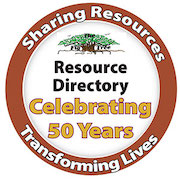Fig Tree Lunch and Breakfast Benefit Speakers
Benefit speakers value the many ways The Fig Tree reflects diversity
As of March 31, The Fig Tree raised $22,110 from the Benefit Lunch and Benefit Breakfast, which is on par with 2015 proceeds by that date. In 2015 the total raised from the benefits was $28,143.
With pledges and appeals to those who have given at benefits in the past, we should surpass that, reaching our basic budget goal of $30,000 and stretching to meet our growth goal of $50,000.
Many thanks to all who helped with organizing, hosting tables, volunteering, attending and supporting The Fig Tree. Thanks also to the speakers, board members and musician.
In his appeal, the Rev. Happy Watkins, board member, invited people to double their giving “so we can keep The Fig Tree and its coverage of diversity going, challenging folk all over the Northwest.
The promotional video is online at thefigtree.org for people to share our story, increase readership and expand our impact.
Mary Stamp - Editor
Videos available for viewing on Youtube. Click on photo or name. |
 |
| Marilee Roloff |
Marilee Roloff
CEO, Volunteers of America of the Inland Northwest
In 31 years with Volunteers of America, I have seen the difference The Fig Tree makes, from finding meal providers for Crosswalk to keeping people updated on our shelter, programs and new facilities. We are grateful for exposure of the needs of our chronically homeless neighbors.
The Fig Tree reflects diversity. Many times when I read it, I’m transported all over the world. Last year’s stories reflect The Fig Tree’s efforts to bring us closer together—from a couple in Myanmar, community gardens in Burundi, parish partners in Haiti and resettlement efforts right here. Inclusion locally is also a theme with stories on the Upper Columbia United Tribes, the Islamic Center, a young Muslim peacemaker, Holocaust survivors, Spokane’s civil rights history and Sandy Williams’ new newspaper, The Black Lens. In The Fig Tree pages, we see understanding, respect and dignity for all people.
The Fig Tree is always there to promote people’s positive life-changing efforts.
 |
| Edie Rice-Sauer |
Edie Rice-Sauer
Executive director of Transitions
It’s easy to live in fear when we think we are alone. Sometimes things feel hopeless. Can hope really change things? Can people be fed and children find homes and be loved? Will this craziness ever end? Am I making a difference? Can we ever respect one another?
Then The Fig Tree comes along and reminds us we are not alone. It reminds me that people are always working to create a new world. In little and big ways, there are many people seeking to create beauty, sing a new song, act justly, love mercy and walk humbly. To continue what the Creator started, challenge the status quo and look at things differently, The Fig Tree invites us to be real together.
At Transitions, we work to end poverty and homelessness for women and children. We do that through housing, job training, and our values of community, growth, respect and justice. The Fig Tree helped us do that through the December 2015 article.
The value of justice is the toughest, but The Fig Tree reminds me that I do not need to do this alone. In his sermon series’ “Strength to Love,” Martin Luther King Jr., tells the victims of segregation to continue to work vigorously and passionately for their God given and Constitutional rights: “Let no one pull you so low that you hate them.”
The Fig Tree invites us to know our neighbor no longer seeing the other as alien but responding in love to the many needs of the world. The Fig Tree supports my mantra of persistent pressure relentlessly applied.
 |
| John Sirois |
Wenatchee & Okanogan Tribes - Upper Columbia United Tribes
It’s important to have diversity in telling stories important to us. Given what we face today, those stories are trampled out in the face of sensation and what sells newspapers and ad space. It’s important for us to uplift and support avenues that provide a platform to tell stories, diverse stories, stories that touch our hearts.
My grandmother said we have two ears and one mouth because we need to listen twice as much as we speak as young people. In Coyote stories, animals teach us how to treat each other.
We have a smart brain, but it can be so smart it tricks us into thinking we are too smart. She would tell me don’t let coyote take over your actions. Remember what comes from your heart.
In The Fig Tree, I see the embers of life, the knowledge of life, as a fire that is burning in us. When we tell stories, we breathe life into the embers as we pass them down to the next generations. When we speak from our heart, we are sticking to a truth that has been passed down through us.
When I talk about our cultural ways and traditions, it’s applied science from thousands of years. Animals tell us about our environment today and what we need to prepare for. Stories don’t just come from humans. They also come from animals and the environment.
What inspires me about The Fig Tree is that it asks us to look at stories not covered in other media, but as we go forward we always need to have our hearts and minds open to what our environment is saying.
I thank The Fig Tree for highlighting issues of fish passage. As we go forward and face climate change, we can rely on diverse stories to make a better path for us all to walk on together in balance. When we become elders, we stand on the shoulders of elders to share knowledge, information and the gift of love with the next generation.
We thank The Fig Tree for providing an avenue for different stories to be told to share so we are in a better place, moving forward together to build a stronger community.
 |
| Naima Quarles-Burnley |
Naima Quarles Burnley
President of NAACP Spokane
In our community and world media are powerful tools. The Fig Tree has an important role in media in the Northwest.
If people of color appear on the cover of the Fig Tree or the front page of any publication, it’s a big deal. If it’s for something good, it’s a real big deal. When we see ourselves in the pages of media, it’s an affirmation of worth.
It says black lives matter. It says brown lives matter, red lives matter, yellow lives matter, and white lives matter.
Media are a tool for storytelling. Whoever tells the story shapes the message.
The Fig Tree highlights good things going on in the community and ways the diverse community comes together for justice and living our faith in action.
Without The Fig Tree and those working for justice, we would not hear the back story of the disproportionate number of blacks, Native Americans and other people of color in jails or expelled from schools.
The Fig Tree tells us the stories of hardworking people overcoming their circumstances with the help of others. If such stories aren’t highlighted, they stay obscure and we can stay ignorant.
I thank The Fig Tree for highlighting stories of good people coming together for justice and peace to make a difference.
We are diverse people, but we are more alike than we are different.
 |
| Candy Jackson |
Candy Jackson
NATIVE Project
from the Bad River Band of Chippewa Indians in Wisconsin
After a 20-year law career I became dietitian and diabetes educator at the NATIVE Project, where we deal with patients with sacred hospitality in health care.
There are 14,000 native people from more than 300 bands living in Spokane. NATIVE Project serves a diverse community. When Mary came to do the story, we sought to make sure she understood what we do there. Having her represent us on the pages of The Fig Tree was an honor for our organization.
The Fig Tree brings diversity. It reports what’s going on in this community. We can see what people are actually doing, the positive things that they are doing.
 |
| Mike Bullard |
Mike Bullard
Inland Northwest Volunteer Organizations Active in Disasters
Many volunteer and faith-based organizations work together as Volunteer Organizations Active in Disasters (VOAD), using donated resources and volunteer labor to rebuild houses in the wake of wildfires that ravaged Washington and Idaho this last summer and the summer before. You can read those stories in The Fig Tree.
Two years ago a microburst north of Spokane destroyed 40 mobile homes, as many as were destroyed by the Oso mudslide. It did not receive national attention. The people survived, so we needed 40 places for families to live. Sixteen churches came together in the Inland Northwest VOAD and raised $50,000. In one year, we worked face-to-face with families to be sure each was back in safe, secure and sanitary housing. It was possible in part because of communication that went out in The Fig Tree, so churches could work together.
Last November as volunteer liaison at the emergency office during the windstorm, I used my cell phone to help people find ways to get out from under toppled trees. I called teams from the Seventh-Day Adventists and Southern Baptists.
I used a list of VOAD partners and The Fig Tree’s Resource Directory. It’s gold. Disaster relief is not just sending money to the Red Cross. It’s part of everyday life. There are vulnerable populations all over the world and in our own area. Disaster response is how we work together to heal communities and make them whole again. That requires communication, collaboration and work of everyone in the community. It’s only possible when we have something like The Fig Tree to pull us together.
 |
| Teri Schibel |
Terri Schibel
Spokane County Headstart/ECEAP
Spokane County Headstart/ECEAP is part of Community Colleges of Spokane. Our story and mission are about education. We serve about 1,500 low-income children and families to prepare children for kindergarten and beyond, because we know education doesn’t stop when they are five.
A big part of helping children learn is to help their families improve their circumstances, so we connect families with resources in the community.
In recent years, we have worked with The Fig Tree on producing the Resource Directory. It’s a wonderful tool for our families. We share printed copies with families. They appreciate having those copies and accessing the resources online. Most of our young families live on their phones, so online access is a huge benefit for them.
We appreciate the comprehensive nature of the directory. As a publicly funded entity, we are not religious, but the directory is not just for religious organizations. It covers all the resources in our region. We appreciate Malcolm’s work to keep it up-to-date.
One of my favorite proverbs is if you want to go fast go alone, but if you want to go far, go together. For the low-income community we serve, it’s more important that we go far. So we appreciate the opportunity to partner with The Fig Tree to help the community go far.
 |
| Alan Eschenbacher |
Alan Eschenbacher
Pastor of All Saints Lutheran Church
The Fig Tree was not at the top of my reading list when I sold insurance. The first week after I began at the church 15 years ago, a man brought a big stack of Fig Trees and set them on the counter. I picked up one and that introduced me to a world of diversity, stories of other faiths and things going on in our area. It encouraged me to go into the Browne’s Addition neighborhood to listen to stories of the diverse people living there—from a wealthy neighbor to an alcoholic living on the street.
That led our church to find ways to use our 18,000-square-foot building. Neighbors have joined church people in doing ministry.
Over the years the stack of Fig Trees goes fast at our church. It introduces us to many local ministries. Now All Saints houses the Southwest Community Center in our basement, with preschoolers and a summer program for older children.
I used to think diversity meant we had both Germans and Swedes, but there’s more than that. A Russian Pentecostal church meets in our basement Sundays.
The partnerships and love that go into the neighborhood, and the stress of having neighbors who don’t appreciate aspects of our ministry are part of being in a diverse community.
I thank The Fig Tree for being a source of encouragement, writing articles about our ministry as it progresses.
Copyright © April 2016 - The Fig Tree









